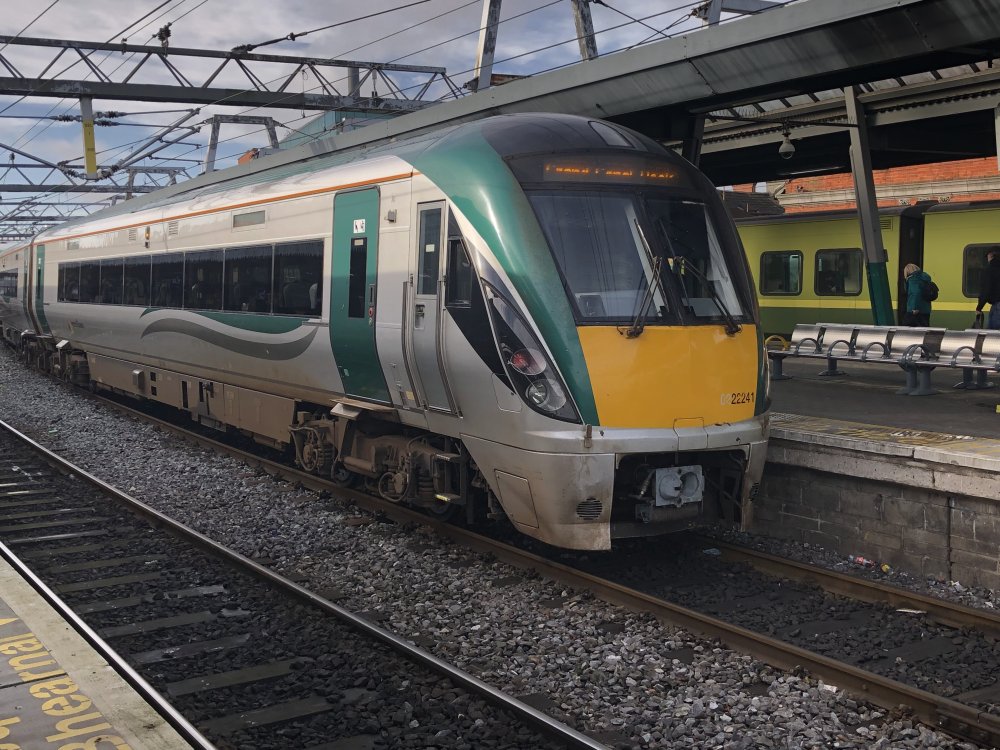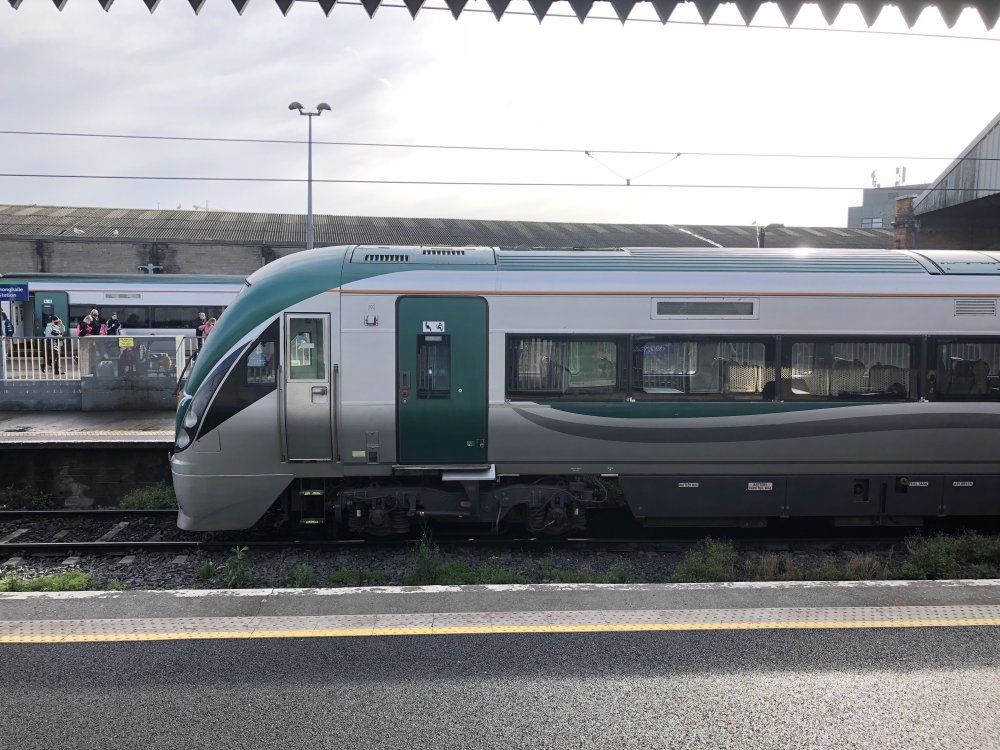-
Posts
15,854 -
Joined
-
Last visited
-
Days Won
393
Content Type
Profiles
Forums
Events
Gallery
Everything posted by jhb171achill
-
The green livery was gone by about 1913, I believe. Black, either lined or unlined (depending on loco type) for some 20 years after that until the blue started appearing in 1932.
-
Now THAT is one mighty looking yoke.......!
-
Exactly - and it was!
-
It was only 4.5 miles from Dromin Junction, with no intermediate station to generate passenger revenue. In the later days of the Loughrea line, more people drove to Woodlawn or Ballinasloe to get the train to Galway or Dublin than travelled on the line. It is likely that more people went even on foot to Dromin, with more trains there to choose from - plus a lower fare than if they went all the way on the train. Every penny counted in those days to most people. I wonder if Ardee had been twice or three times the distance from the main line, would the passenger service have survived? Edenderry was another. Quite big town, but no passenger train since the early 1930s, and even a modest enough amount of goods given its size, in later years. Same with Moate. In its later years it only had one train each way stopping there, and even that in late evening; light years beyond utterly useless as anything approaching a public service - but Athlone station was (and is) just up the road. I daresay the majority of people travelling by rail from Tipperary town today just hop in the car up to Limerick Junction which is only 3 miles away, where you have an hourly service, compared to the L Jct - Waterford route which seems to have two trains per decade, provided there's a good wind and they can find a driver.
-
Today marks the 46th anniversary of the last significant "round of closures", when, on 3rd November 1975, train services ended on the following lines: Dromin Junction - Ardee Claremorris - Collooney Listowel - Ballingrane Junction Attymon Junction - Loughrea. All but the last were goods only; Ardee since about 1931 and the other two since 1963. Loughrea was also the last place in Ireland to handle cattle traffic to Dublin, and the last in Ireland by some twelve years or so, to have mixed trains. The last traditionally operated Irish rural branch line, in fact. And of course, the last place (and only one of two ever) where a "G" class loco ever hauled passenger trains in public service! RIP the lot of yiz.
-
I'm not sure about that, Wexford70. I have seen one picture somewhere of one such clearly painted in that normal style, but I don't know where it was (as in, on what line / company), nor when it was. What I do know is that as far back as the 1930s, the BCDR at least used galvanising rather than paint on some metal surfaces. Then you had the GNR occasionally using creosoted telegraphy-style poles for some signals! You've got me wondering now - must start delving through pictures!
-
I absolutely love this layout - more and more please!
-
Poultry import regulations and so on…..
-
Yes, pretty universal white with black tops and bottoms, though some had white tops too. Silver ones seem to have appeared in the late sixties.
-
Excellent little book, me of my favourites.
-
Wow! Really anticipating this one! Looks like an amazing concept!
-
The siding on the extreme right seems to have been lifted in the early 1950s, but the main goods road on the left was lifted not long before closure. The picture is very likely to be within September 1957.
-
Yellow on the grey and silver / black liveries. On the last iteration of the orange & black, it was day glo orange - however, this could fade to a dirty pink, while in some colour photos, if the colour saturation was too much, it could look red.
-
What’s that station building? Looks very MGWR-ish!
-
Excellent work, Tony!
-
-
Wow!! P B Whitehouse was quite an expert on the line, so this should be good….
-
Last NCC / UTA / NIR "Jeeps" in traffic
jhb171achill replied to jhb171achill's topic in General Chat
There’s 4 1/2 locos then! (No. 4 one side only!) -
I would say kadees.....
-
Last NCC / UTA / NIR "Jeeps" in traffic
jhb171achill replied to jhb171achill's topic in General Chat
Nos. 3, 10 & 56 had them - the latter possibly the first to carry it in 1968. No. 4 had it on one side only. It is possible there were others. -
Last NCC / UTA / NIR "Jeeps" in traffic
jhb171achill replied to jhb171achill's topic in General Chat
No. 4 had one on one side only. I have a note somewhere of the others - I think two had the NIR logo. I will delve and report back. -
In answer to a query from a friend, I thought this might be of use to anyone modelling early NIR; information courtesy of Joe Cassells: Loco Last known use Withdrawn for scrapping 4 22.10.70 (Preserved) 5 30.03.70 10/70 6 04.70 09/70 50 01.70 10/70 51 16.10.70 02/71 53 02.05.70 06/71 55 03.70 10/70 Thus, the last three to be actually used are the three in bold - 4, 51 and 53.
.png.c363cdf5c3fb7955cd92a55eb6dbbae0.png)







